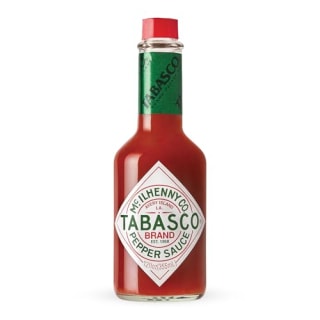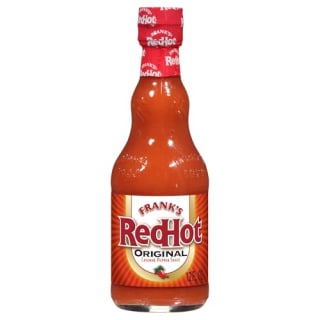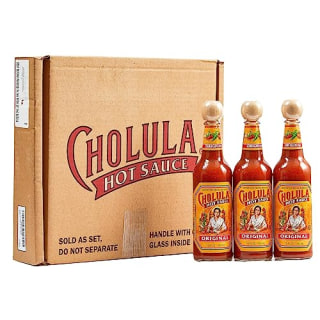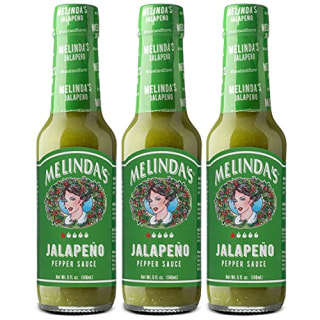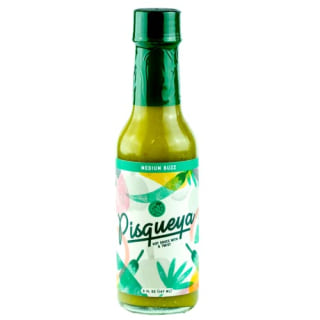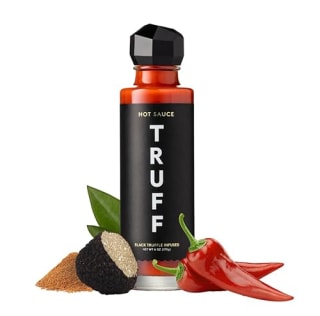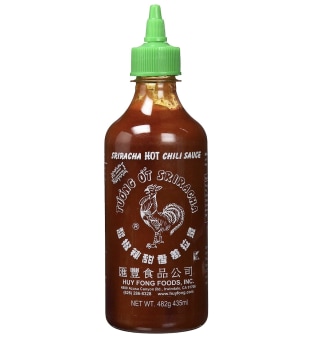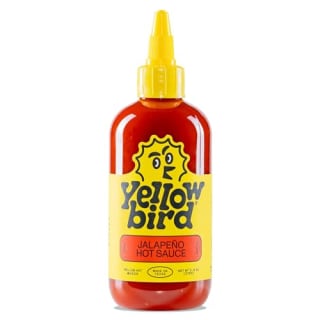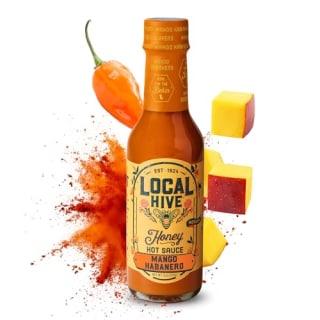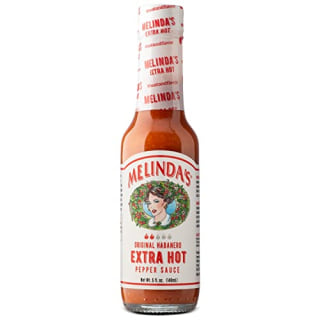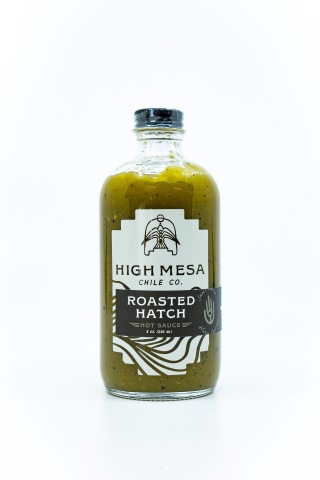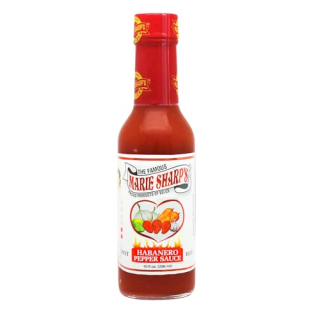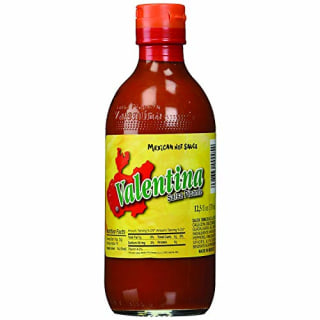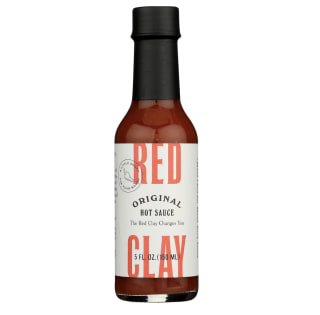There’s one rule when it comes to hot sauce: it’s personal, says Hector Saldivar, the founder and owner of Tia Lupita Foods. Maybe you carry a tiny bottle of one that sets your mouth on fire at all times, or perhaps you exclusively add a few drops of a mild option to scrambled eggs. Whatever your preferences are, hot sauce amps up the flavor and spice level of food, making it a versatile condiment that nearly every cuisine across the world has its own version of, says Julian Plovnick, a chef and culinary specialist at Sur La Table.
To help you navigate the crowded hot sauce market, the NBC Select staff tested over 30 types from brands like Tabasco, Melinda’s, Yellowbird, Truff and Huy Fong Foods. I also talked to culinary experts about what to consider while shopping for and tasting hot sauces, plus what to do if you eat one that makes you run for the hills.
Want more from NBC Select? Sign up for our newsletter, The Selection, and shop smarter.
There are hundreds (yes, literally hundreds) of hot sauces out there, making it impossible for us to test them all. To narrow down which ones our team tried, I first talked to five culinary experts, including chefs and hot sauce manufacturers, about what brands they recommend. Experts also walked me through all the factors that impact a hot sauce’s flavor and heat level, and explained the Scoville Scale (read all about that here). I gathered a list of hot sauce brands the NBC Select team loves, too, and researched smaller businesses gaining popularity online.
I narrowed down my initial testing list of over 50 to about 30 hot sauces to test. We focused on options that are accessible at grocery stores or big retailers online and/or in stores, with a few exceptions for popular small brands. In some cases, brands sent us courtesy samples, but I bought most of the hot sauces at grocery stores in New York City. Once I had all the hot sauces, the NBC Select team spent a day tasting and evaluating them.

The point of hot sauce is to enhance the flavor of food, says Lisa McManus, the executive editor of America’s Test Kitchen Reviews. But what you pair them with can impact their overall flavor, so to make it an even playing field for our test, we poured hot sauces on tortilla chips, which are essentially a blank canvas. The tortilla chips were mainly made of corn, so there was nothing to cut the heat with, giving us the full impact of each sauce’s spice level. This base also gave us ample opportunity to taste the flavor of each hot sauce and ensure that nothing was distracting us from its ingredients.
After trying the hot sauces in-office, testers took their favorite sauces home and used them how they normally would in their day-to-day lives. They provided additional feedback for this phase of testing.
During our testing, we evaluated hot sauces based on the criteria below:
- Overall spice level: People have different spice tolerances, but to get a general consensus from our team, testers rated heat from 1 (a little kick, nothing crazy) to 5 (offensively hot, mouth on fire, tearing, need milk immediately).
- Overall flavor: Testers described what ingredients they tasted most and what overall impression it gave, be it bright and fruity, sharp and acidic or warm and herby.
- Spice to flavor ratio: Was the hot sauce so spicy that testers only got heat and no flavor? Or was there a nice balance of both?
- Texture and consistency: Was the hot sauce runny, squeezable or somewhere in between? Testers also shared if the sauce was smooth and completely pureed, or if it had some grit to it from small bits of ingredients.
- Packaging: Testers considered the bottle each hot sauce came in and how easy (or difficult) the packaging made dispensing the condiment on food. Screw-off tops, squeezy bottles, shakers…we saw it all.
“In the United States, probably the number one thing that people think of when they think of hot sauce is Tabasco,” says Stephen Chavez, a senior chef-instructor at the Institute of Culinary Education’s Los Angeles campus. It’s considered a Louisiana-style hot sauce, meaning one that has a vinegary base, is fermented and uses medium-hot chilis like tabasco or cayenne peppers, which is where it gets its bright color from. Tabasco is also a pretty salty sauce, says Marcus Shell, the culinary director of Uptown Hospitality Group and the executive chef of By The Way in Charleston, South Carolina.
Tabasco’s vinegar-forward flavor is the first thing our testers noted about the hot sauce, in addition to its thin, runny consistency. It’s a very basic option made with only three ingredients, and you can find it in nearly any grocery store, as well as the pantry section of most big-box retailers. I’ve even seen it in pharmacies and at gas station stores. Tabasco is one of the least intimidating sauces we tried, too — testers say it didn’t linger in their mouths much. A few drops is plenty to give food a tangy kick, so if you’re looking for something to get your tastebuds used to hot sauce without fear of overwhelming them, Tabasco is ideal.
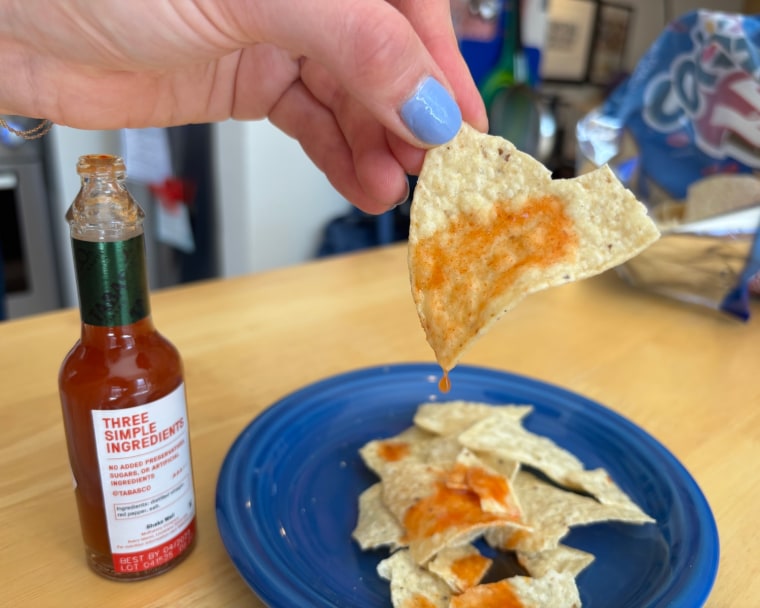
Similar to Tabasco, Frank’s Red Hot is a Louisiana-style variety, but its consistency is a bit thicker, its flavor is less vinegary and its spice level is milder, according to our testers. It’s one of NBC Select intern Andriana Kourkoumelis’ all-time favorites. “As someone who enjoys a kick to my food, Frank’s is the perfect level of spicy,” she says. “This hot sauce has been my favorite since I was a kid and I put it on absolutely everything.” The brand especially recommends adding it to wings, chicken sandwiches and buffalo chicken dip.
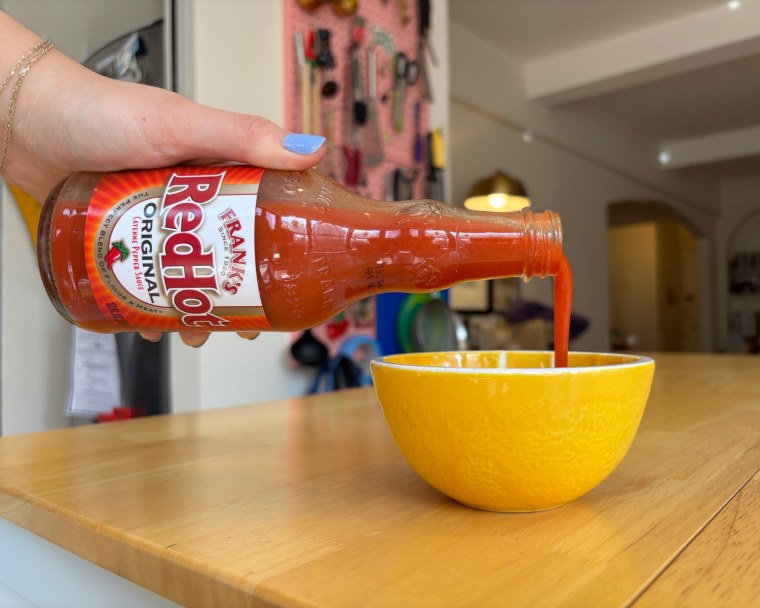
“Cholula was my introduction to hot sauce as a kid, so it’s a hit of nostalgia every time I eat it,” says NBC Select updates editor Mili Godio. “It’s extremely versatile, so I can put it on practically any food, including eggs, avocado toast and pizza. Plus, it’s not too strong, so I don’t feel like I’m in pain when I pair it with food.”
Cholula is a Mexican hot sauce made with various spices (although the brand doesn’t specify which ones), giving it a full-bodied flavor with a firm heat index, says Shell. He finds it perfect for tacos, among other foods. I used to never reach for Cholula when it was on the table at restaurants, but after testing it, I’ve begun to. I definitively taste the spices in it, making bland dishes more palatable and flavorful dishes even more nuanced. Like Tabasco, you can find Cholula nearly anywhere, so it also gets bonus points for accessibility.
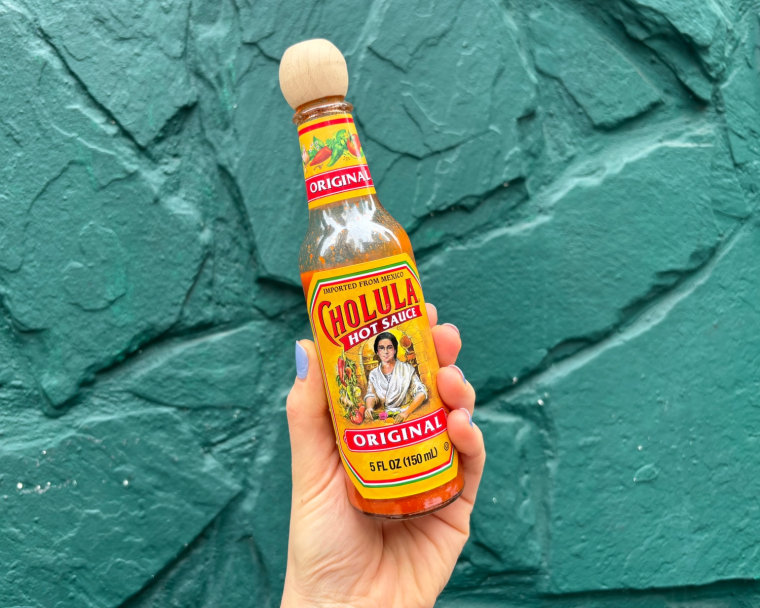
We tried Melinda’s entire line of hot sauces during our testing, and out of all the green options, this jalapeño one won all our testers over. Many of them now plan to keep a bottle at home.
Melinda’s Jalapeño Pepper Hot Sauce stays on your tongue and in your mouth for a bit after you eat it, says NBC Select commerce editor Lindsay Schneider, who has a low heat tolerance. There’s a hint of sweetness to the mild sauce, but you get a kick, too, says Godio. Melinda’s, one of our favorite Latino-owned businesses, describes the flavor as tangy, zesty and zingy, and recommends eating the hot sauce with foods like tacos, tortas, burritos, enchiladas and quesadillas. Our testers only had one complaint about this hot sauce: it comes out of the bottle too slowly because the opening at the top is very narrow.
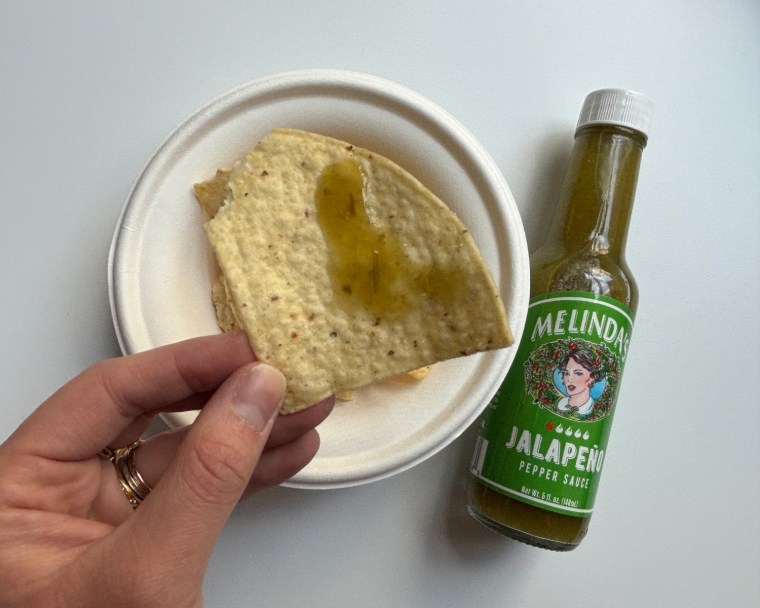
“I remember being sad when this bottle of hot sauce was finally empty,” says NBC Select reporter Harry Rabinowitz, who brought it home after our first phase of in-office testing. “It’s lively — the mix of both jalapenos and habaneros gives it a fun, layered taste that’s good as a hot sauce or cooking ingredient.”
Pisqueya’s Medium Heat Hot Sauce is vibrant, bright, zesty and tangy, according to the women-owned brand. Testers say its heat builds in your mouth for a few seconds after you try it, but it doesn’t stick around for long, making each bite a blank canvas. We also noticed that the garlic in the mixture grounds the acidity and peppers so all the flavors are present and well-balanced. The hot sauce is liquidy, but it’s not watery at all — it has a thicker, puree-like texture to it.
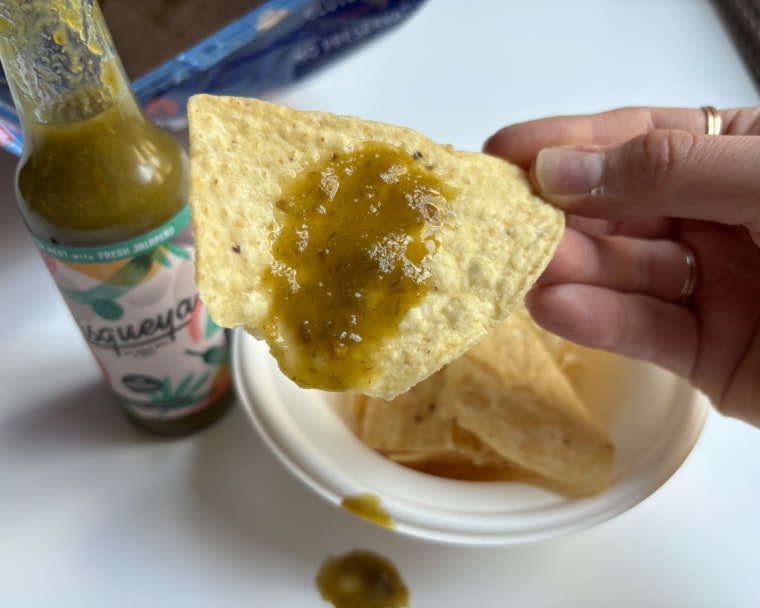
Truff’s hot sauce is the only one we tested that’s infused with black truffles, giving it a unique flavor — nothing we tried was remotely similar, and it was clear that the brand focused on taste, not just spice. “As a truffle lover, I’m a big fan of Truff’s original flavor — it’s delicious and it’s not too strong,” says Godio, who has been a Truff customer for years. “I keep my Truff hot sauce stocked at home, and I gift it to nearly all of my friends and family around the holidays.” The brand gets the black truffles for its hot sauce from Northern Italy and its agave nectar from Jalisco, Mexico.
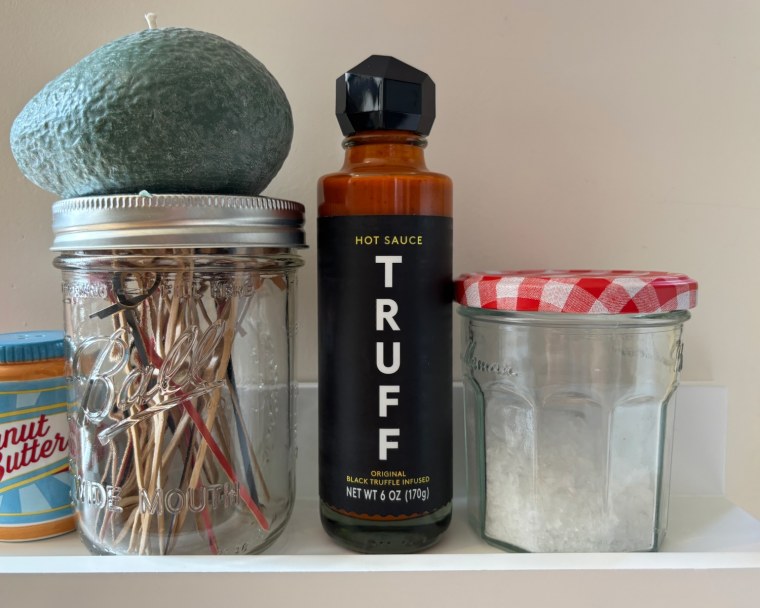
Sriracha is a tangy, slightly sweet and garlicky hot sauce that originated in Vietnam and is made with fresno peppers, which are red jalapeños, says Chavez. Numerous brands make their own version of it, but Huy Fong Foods’ Sriracha is arguably one of first brands to bottle it up and gain notoriety in the U.S. I consider it a classic, and growing up, there was always a bottle in my family’s fridge.
Beyond the fact that the flavor compliments almost anything I’m eating, I love the squeezy bottle dispenser, which helps me control how much I add to food. I also like the thicker, drizzle-able consistency — I often mix it into dressings, marinades and dips to add a little heat.
“This hot sauce isn’t super spicy, but it adds a nice jalapeno flavor to whatever you want,” says Rabinowitz. “For me, it’s the most put-it-on-everything hot sauce. You can tell from the bottle, which is a plastic squeeze bottle with a screw cap, that it’s basically screaming ‘drizzle this on whatever you want.’” The hot sauce has a bright red color and a rich, savory flavor, plus it’s on the thicker side, so it sits on top of food nicely rather than immediately getting absorbed into it.
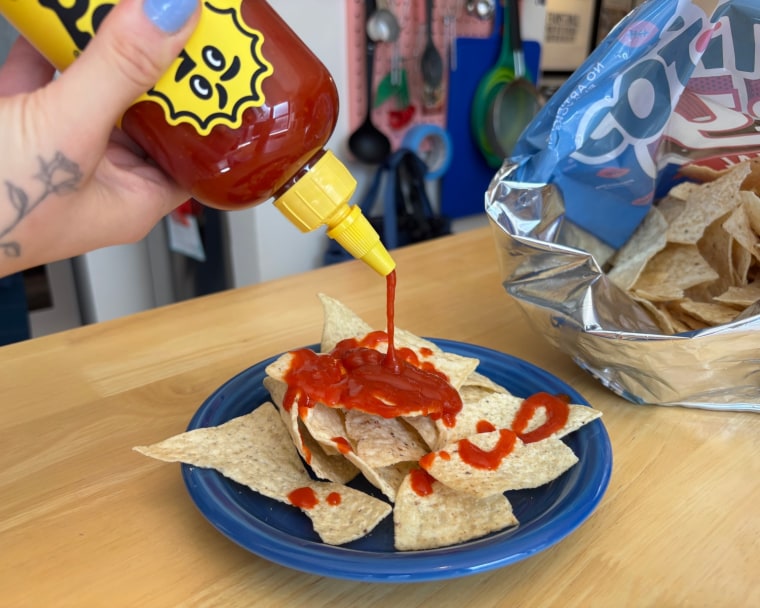
Local Hive is primarily a honey brand, but it makes a line of honey-infused hot sauces, all of which we tested. I immediately gravitated toward the Mango Habanero option because I prefer hot sauces that are centered around flavor rather than heat, and this was the only one we tried that had fruit as one of its main ingredients. The hot sauce has a noticeable sweetness from the mango and honey it’s made with, but it’s not overpowering. The sweetness cuts the heat of the habanero peppers just the right amount, although it definitely has a kick, which I primarily feel on my tongue. Because this hot sauce is slightly sweet and citrusy, I add it to foods I’d typically drizzle hot honey on, and I’ve enjoyed it on fish like salmon, shrimp, halibut and sole, as well as burrito bowls.
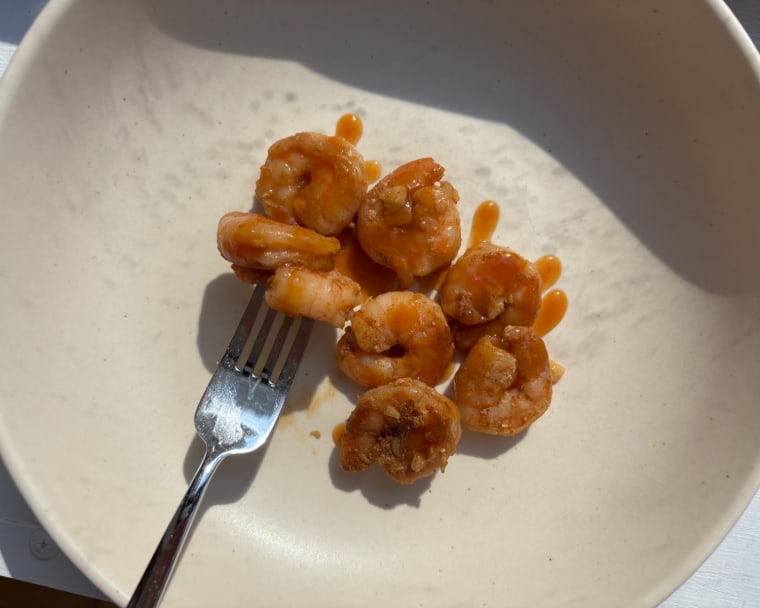
Original Habanero was our team’s favorite red hot sauce from Melinda’s. Rabinowitz took it home after our in-office testing, and it’s the first bottle he emptied. “It’s classic, versatile, easy to use and easy to enjoy,” he says. “I put it on basically everything and it gave a pleasant, palatable kick that wasn’t too vinegar-heavy, unlike other brands’ options. It’s also got a classic glass bottle with good flow.” The sauce is warm, fruity and citrusy, according to Melinda’s.
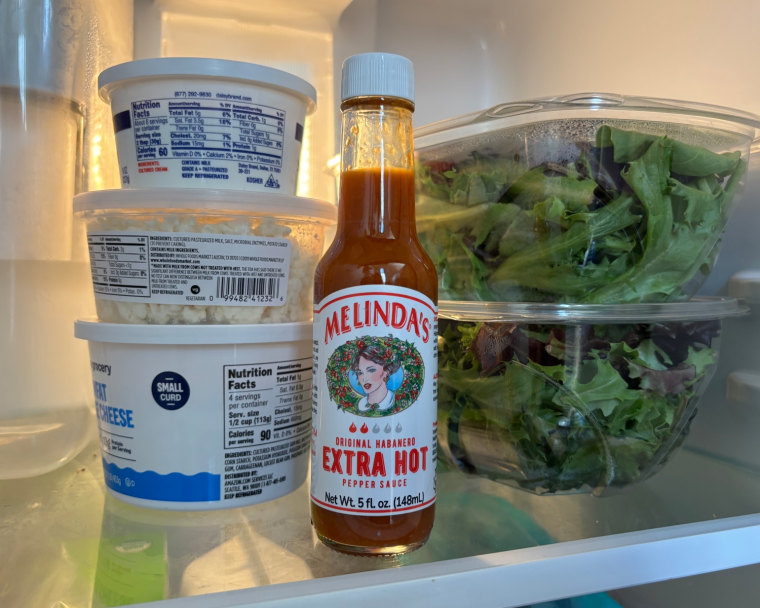
High Mesa Chili Co. hot sauces are only available through the brand’s website, so they’re not as easily accessible as most of the other options we tested. But our list of favorites felt incomplete without its Roasted Hatch Hot Sauce, which was an overall crowd-pleaser, even among testers who are typically “afraid” to consume spicy foods, like NBC Select SEO editor Nikki Brown. “When you taste a bite, the chili hits you hard and fast, but then it tones down,” she says. “The taste also lingers in my mouth, but not so much that I can’t enjoy the rest of my food.” The hot sauce is made with a variant of Hatch chili called Matador, which High Mesa Chili Co. gets from New Mexico.
This hot sauce is one of the thickest we tried — many testers compared it to salsa. The only flaw we found was in the packaging. Since the hot sauce is thick, we had to shake the bottle to get it out of the narrow opening, and once it started coming out, it was hard to stop.

In addition to testing hot sauces, I asked experts to share their favorite options. Here are their top picks.
“Far and away, my son and I’s favorite hot sauce is Marie Sharp’s,” says Chavez. “They’ve figured out the right blend of really spicy and vinegary, and their sauces are carrot-based, so the carrot balances out the pepper. If you’re trying to find a hot sauce you haven’t had before, Marie Sharp’s entire line is really good, but especially the habanero.”
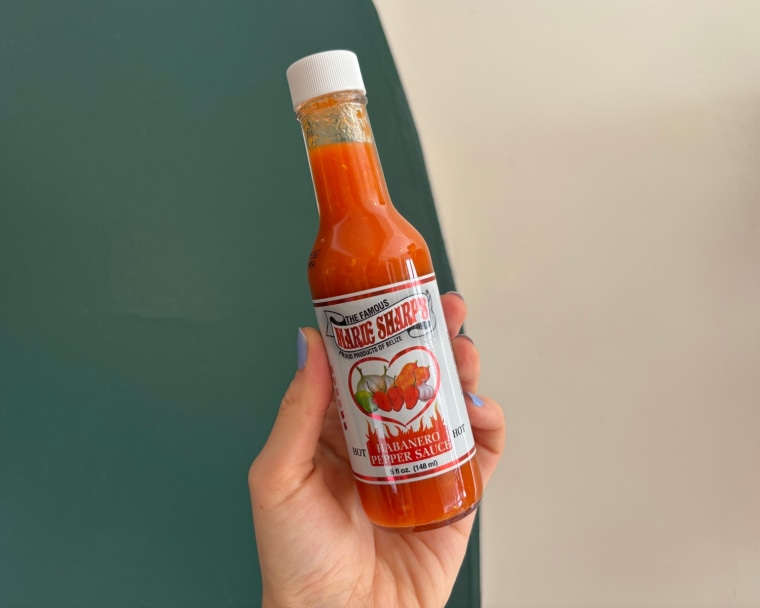
“Most people know Mexican hot sauces like Cholula, Tapatio and El Yucateco, which are all really good, but the real ones know that Valentina is the best,” says Chavez. “It’s not as spicy as the others, but it’s really flavorful.” Shell agrees — when people ask him for hot sauce recommendations, his sleeper pick is always Valentina.
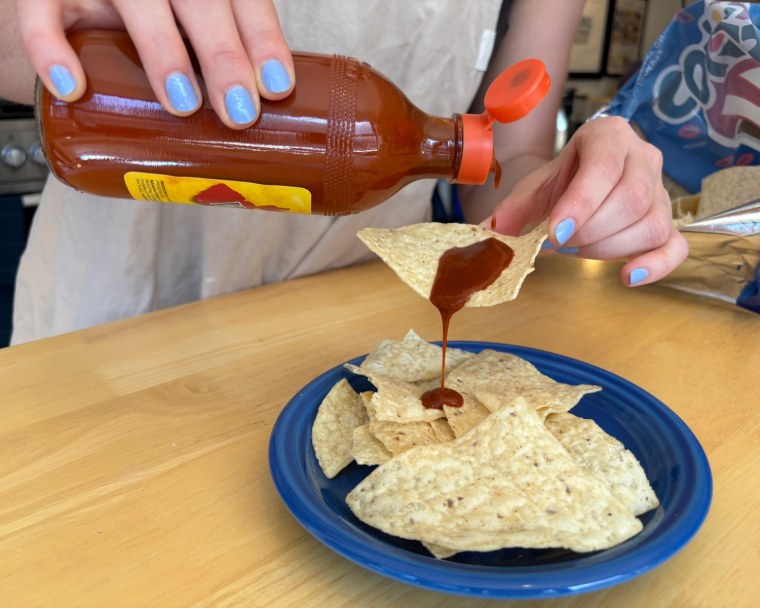
“Red Clay’s OG Hot Sauce has a subtle but sufficient fresno chili flavor with a smooth, silky texture to pair with its original purpose, which is oysters,” says Shell. “All their hot sauces are chef-crafted, fresh and feature almost peculiar ingredients for hot sauce. Their products are never cooked — instead they use salt and vinegar to ferment the chilis and create a naturally emerged product.” In addition to the brand’s original sauce, Shell recommends their Carolina variety, which he says has a similar consistency to Cholula.
Before you start shopping for hot sauce, ask yourself what you want it to add to a dish. “Are you looking for heat or are you looking for flavor?,” says Shell. “Some sauces exist just to make you sweat, and some really compliment food.” Once you identify that, you can start thinking through the factors experts outline below to find a hot sauce you like.
While shopping, remember that flavor and heat are subjective, says Saldivar. What’s spicy or delicious to you may not be to someone else, so testing a bunch of options, pairing them with different foods and regulating how much you use (starting with a couple drops before dousing a meal with it) is key.
Heat level
Hot sauce gets its spice from the peppers it’s made with. Different types vary in their heat level, which we measure using the Scoville Scale. It’s based on peppers’ concentration of capsaicin, a chemical compound that causes a burning sensation when we consume it, says McManus.
Peppers are rated on their heat level in Scoville heat units (SHU) — the higher the number on the scale, which ranges from 0 to over 2,000,000 SHU, the hotter the sauce, says Shell. For example, the bell pepper is lowest on the Scoville Scale at 0 SHU, which means it’s not spicy, says McManus. On the other hand, Pepper X is highest on the Scoville Scale at about 2.693 SHU, which means it’s “burn your internal organs” level of spicy.
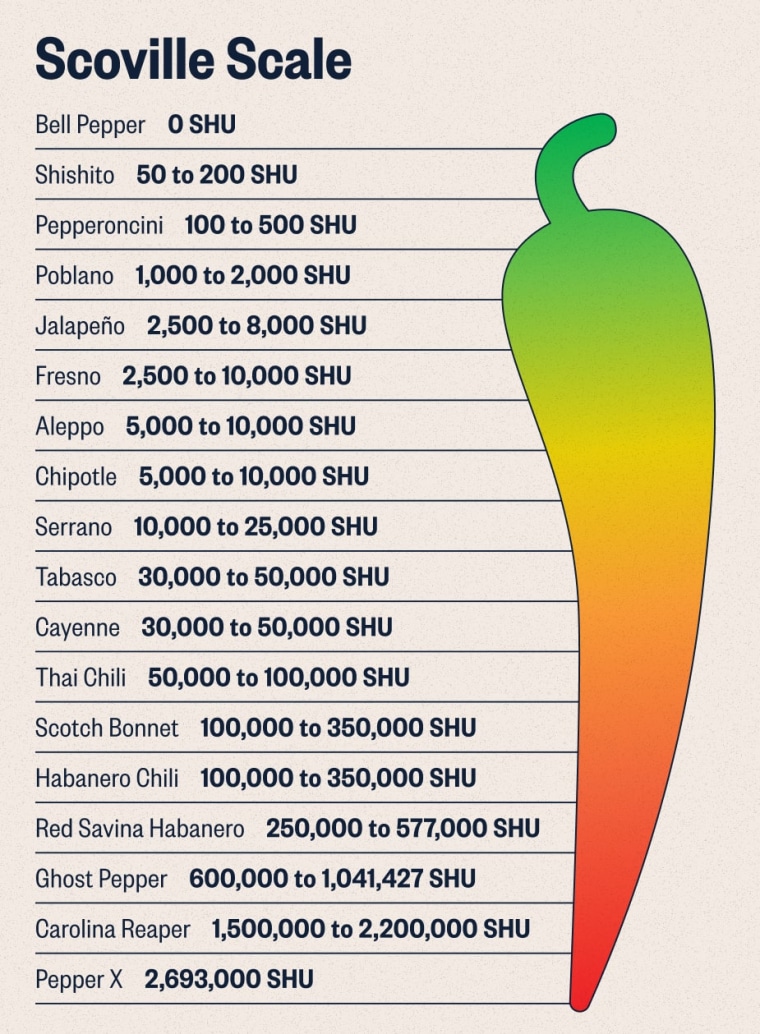
The Scoville Scale establishes what Plovnick says is a “scientific, universal understanding of a breed of pepper” — in other words, a pepper’s Scoville rating isn’t subjective, so once it’s assigned a heat level, it’s a widely accepted fact. To determine a pepper’s Scoville rating, food labs conduct a formal test. “It’s done by diluting an extract of pepper in sugar water until a panel of trained tasters can no longer detect the heat,” says Shell. “The number of times it’s diluted dictates the measurement.”
Hot sauces, in addition to the peppers they’re made with, can get Scoville ratings, says McManus. But to do so, brands have to hire third-party labs, which many don’t want to pay for. That’s often why you don’t often see a Scoville rating listed on hot sauce bottles, says Chavez. Plus, the average consumer doesn’t know much about the Scoville Scale, so they can’t use SHU as a reference point.
Instead of a Scoville rating, brands may use a scale of fire illustrations or a thermometer to represent spice, while others label them mild, medium or hot. “Ultimately, the biggest giveaway is knowing the type of chili a hot sauce is made with,” says Chavez. You can find that listed on the bottle’s ingredient label and look it up to find its SHU rating before comparing it to the SHU rating of other peppers you know you can tolerate.
Flavor
A hot sauce’s flavor is dictated by the ingredients it’s made with. The core ingredients are usually peppers, vinegar, salt and alliums like garlic, shallot and onion, says Chavez. From there, brands add other vegetables, fruits and spices in varying amounts, which impact a hot sauce’s overall flavor profile and make each type unique. For example, hot sauces made with fruits usually have a sweet or citrusy flavor, and those made with aromatics like spices and herbs can lean floral, says McManus.
Vinegar-based v.s. fermented
Adding vinegar to hot sauce or fermenting its base are both ways to preserve the condiment, making it shelf-stable before it’s opened so you can find it in the pantry aisle, says Plovnick. Each preservation method creates a different flavor profile, too.
To make fermented hot sauces, some of the most popular being Tabasco and Sriracha, brands ferment chilis by putting them in a salt brine solution before blending them with all the other ingredients. Doing so somewhat cuts the pepper’s heat, making fermented hot sauces typically less spicy than vinegar-based varieties. The fermented chilis give hot sauce a complex, layered, umami flavor similar to what you’d expect from other fermented foods like pickles and kimchi, says Plovnick. Fermented hot sauces usually have vinegar in them, but not as much as vinegar-based hot sauces.
Vinegar-based hot sauces, like Cholula, aren’t made with fermented chilis. Instead, they fully rely on vinegar for preservation, says Plovnick. These hot sauces tend to have a bright, sharp, sour and tangy flavor, plus they’re usually spicier than fermented hot sauces.
Texture and consistency
Not all hot sauces are created equal. Some are thin and runny, some are semi-gritty and paste-like, or thick and pourable, says McManus. Texture and consistency are personal preferences, and often, what you’re putting the hot sauce on guides your picks. For example, I prefer topping a bowl of fried rice with a thick Sriracha drizzle, adding flavor and a picturesque finishing touch, but I like to shake a couple drops of runny Tabasco on chicken wings since it’s thin enough to blend into the sauce they’re coated in.
Food pairings
There are no hard-and-fast rules around which hot sauces you should pair with specific foods — ultimately, go with whatever you think tastes good. But traditionally, Plovnick recommends pairing vinegar-based hot sauces with fattier, richer foods, like a breakfast plate with scrambled eggs, hash browns and sausage. “Vinegar-based hot sauces will cut through some of that fat and make it easier to eat it all,” he says. On the other hand, fermented hot sauces tend to best compliment meats, fishes and marinades. “Fermented hot sauces have more aromatics so they have more depth of flavor, yet they won’t overpower these foods with vinegar,” says Plovnick.
At NBC Select, we work with experts who have specialized knowledge and authority based on relevant training and/or experience. We also ensure that all expert advice and recommendations are made independently and with no undisclosed financial conflicts of interest.
- Julian Plovnick is a chef and culinary specialist at Sur La Table.
- Marcus Shell is the culinary director of Uptown Hospitality Group and the executive chef of By The Way in Charleston, South Carolina.
- Hector Saldivar is the founder and owner of Tia Lupita Foods.
- Stephen Chavez is a senior chef-instructor at the Institute of Culinary Education’s Los Angeles campus.
- Lisa McManus is the executive editor of America’s Test Kitchen Reviews.
I’m a reporter at NBC Select who has written about food and beverages for over five years, including nonalcoholic wine and spirits, olive oil, salt, chocolate and honey. To write this article, I coordinated a hot sauce taste test, during which the NBC Select staff tried over 30 varieties and provided feedback about each one. I also talked to five sources about what to consider while shopping for hot sauce and how to best pair it with different foods.
Catch up on NBC Select’s in-depth coverage of tech and tools, wellness and more, and follow us on Facebook, Instagram, Twitter and TikTok to stay up to date.



